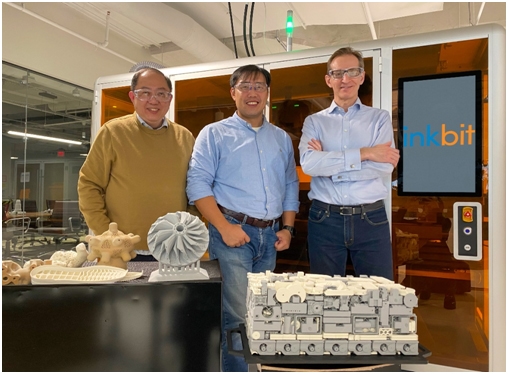Founded in 2017, Inkbit is an additive manufacturing company located in Medford, Massachusetts. They have developed their InkbitVistaTM system for mass production of end-use polymer 3D printed parts. The system incorporates a novel technology called Vision-Controlled Jetting (VJC) that delivers high-resolution print capability enabling users to print parts with dimensional accuracy and precision at high volume.
Game-changer – Production Repeatability
This novel Vision-Controlled Jetting (VCJ) technology addresses one of Additive Manufacturing’s key barriers to mass production – repeatability.
VCJ uses vision based closed loop control to compensate for the natural variation of the printing process. Each layer is dynamically created based on the data of the previous layer scanned data which ensures high levels of print accuracy and allows for defined micro features (down to 40µm features) to printed.
With InkbitVistaTM system high-resolution and accuracy capability[i], the transition to industrial AM mass production is truly on its way to widespread implementation.
1 White Paper – Dimensional Accuracy & Precision Study (ASTM/ISO 52902) to be released.
Game-changer II – Production Portability
High levels of portability and accuracy allows for harnessing the real value of the digital inventory, where CAD designs can be printed directly from source files, with minimal Design for Additive Manufacturing (DfAM) and high levels of accuracy.
Game-changer III – Maximum packing density
Maximum nesting density has always been a feature for polymer based printers. However, maximizing packing density requires orienting parts in different print axis, which affects end-product properties depending on orientation of print.
In the case of InkbitVistaTM, printed parts exhibit uniform directional tensional strengthwith minimal deviations.
Game-changer IV – Speed of Process Cycle
InkbitVistaTM technology enables fast printing cycles and comparatively shorter post processing times, with easy to remove wax support.
The R&D team is working towards automation to further improve productivity.
AM creating Competitive Advantage
Adopting an AM product design mindset will enable companies to gain an unfair competitive advantage over its competitors, such as a few keys ones as follows,
- Product Design control
- Once products are designed with AM concepts, replication of these would be difficult both by traditional manufacturing methods but also the difficulty in reverse engineering an AM structure filled with internal channels.
- Product Simplification
- Through design build-of-materials (BOM) can be reduced (reduction in inventory holding, costs, and lead times)
- Weight and handling of the parts and product can be more ergonomic.
- Green Manufacturing (ESG focused)
- Unlike other AM platforms, InkbitVistaTMrecycles a large amount of the support material.
- Waste materials from the Inkbit printers are non-toxic.
Deployment
The InkbitVistaTM has been commercially available since 2022 and has been deployed at a number of customer sites, and continues to get the attention of the industrial manufacturing community.
Key Application areas
Inkbit’s material suite that materials that have properties such as chemical inertness, soft elastomer, and the R&D team continues to work with its customers to develop new materials for applications.
Product designs that require high accuracy and resolution with chemical inertness are suitable target applications.
Some examples of applications, below
Subscribe to AM Chronicle Newsletter to stay connected: https://bit.ly/3fBZ1mP
Follow us on LinkedIn: https://bit.ly/3IjhrFq
Visit for more interesting content on additive manufacturing: https://amchronicle.com


